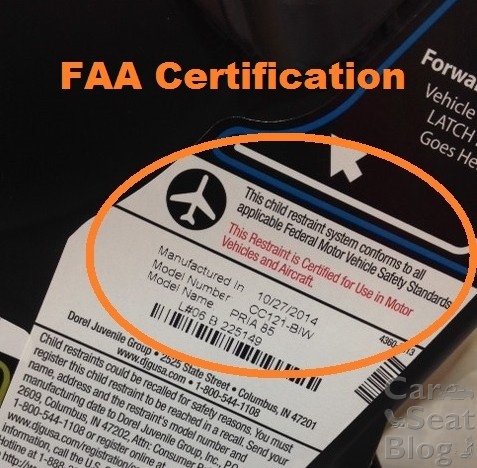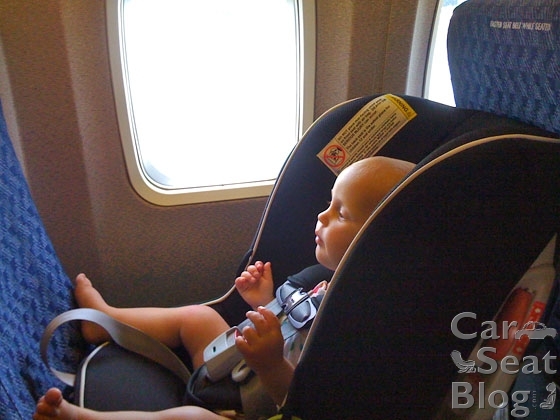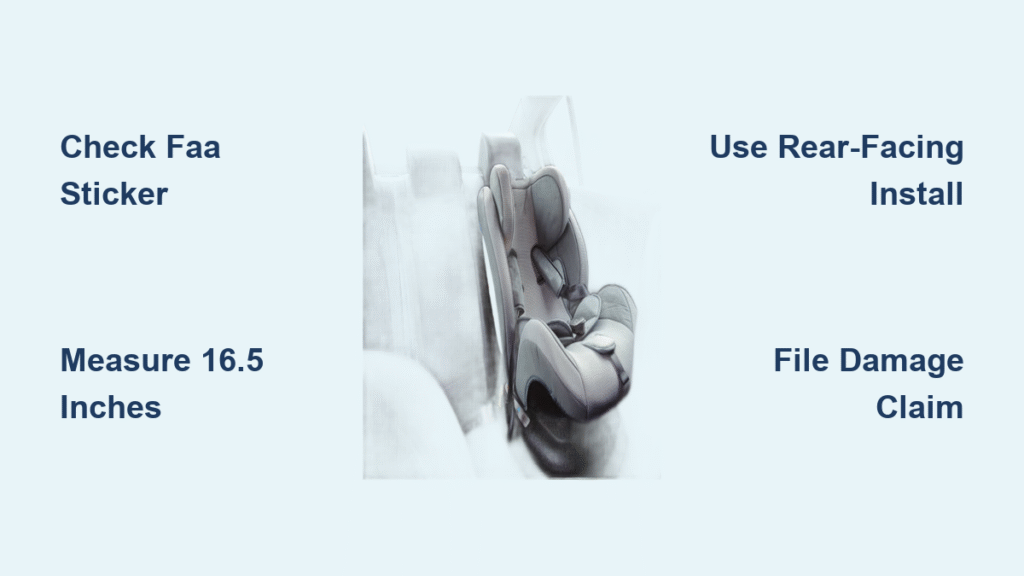Your toddler’s car seat arrives at baggage claim in three pieces while the airline shrugs, “That’s normal handling.” Suddenly you’re facing a $300 damage claim and a 700-mile rental car drive with an unrestrained child. Over 60% of parents who bring car seats on planes experience damage or installation disasters—often because they missed critical FAA rules or airline-specific traps. Flying with a car seat demands military precision: one wrong move and you’ll face gate agents refusing your seat, international laws voiding your insurance, or a wobbling installation during turbulence. But nail the process, and you’ll secure your child safely while avoiding rental car nightmares. This guide delivers actionable steps airlines don’t advertise—from verifying certification labels to filing damage claims in under 10 minutes.
Should You Bring a Car Seat? The 4-Question Decision Matrix
Stop guessing whether to haul your car seat onboard. Run through these four questions before booking flights to avoid lap-held toddlers or illegal installations abroad:
| Question | If YES, Bring Your Seat | If NO, Skip It |
|---|---|---|
| Renting a car/taxi at destination? | Mandatory—rental agencies won’t install foreign seats | Use public transport or pre-book Uber/Lyft with seats |
| Flying outside US/Canada? | Only if FAA-approved and under 16.5″ wide | Rent locally (verify ECE R44/03 for Europe, AS/NZS 1754 for Australia) |
| Child under 2? | Buy their ticket—it’s the only FAA-approved safe option | Lap children are legal but risk serious injury in turbulence |
| Flying non-US airlines? | Confirm seat is on carrier’s approved list (e.g., ANA’s foreign seat list) | Gate-check it or rent at destination |
Critical reality check: Airlines must let you use an FAA-approved seat if you buy a ticket for your child—but many parents skip the ticket, forcing lap-holding. The FAA warns that a 30-lb child becomes a 1,000-lb projectile in 2G turbulence. Never risk it.
Pre-Flight Seat Verification: Avoid Gate Agent Rejection

Find the Red FAA-Approval Sticker—Or Get Denied
Flip your car seat over and hunt for the red certification label stating: “This restraint is certified for use in motor vehicles and aircraft.” No sticker? The airline will reject it. If the sticker’s faded (common on older seats), call your manufacturer—they’ll mail a replacement sticker free. Pro tip: Photograph this label and your seat’s model number. Gate agents often cite outdated policies, but showing proof overrides their objections.
Measure Width Like a Pro (16.5″ Is Your International Lifeline)
- US domestic flights: Seats under 17″ usually fit, but measure with armrests extended
- International flights: 42 cm (16.5″) is the hard limit—exceed this and airlines like Lufthansa will gate-check it
- Measurement hack: Use a rigid tape measure from the outermost point of one armrest to the other while seated upright
Deadly mistake: Booster seats lack shoulder belt anchors, making them useless on planes. Airlines won’t stop you from bringing one—but you’ll stare helplessly as flight attendants forbid installation.
International Certification Landmines That Void Insurance

– Europe: US seats are illegal in rental cars. Police can fine you €300+ and deny insurance claims for accidents.
– Australia: Only AS/NZS 1754-certified seats allowed—fines hit $360 AUD per ride.
– Japan: ANA/JAL prohibit most foreign seats; check their updated lists 48 hours pre-flight.
– Canada: Transport Canada labels are mandatory—US-only seats get rejected at rental counters.
Workaround for long trips: Buy a lightweight seat locally (Walmart sells FAA/ECE dual-certified models) and donate it when leaving. Cheaper than weekly rentals.
Airport Transport Strategies That Prevent Damage
Four Ways to Haul Your Seat Without Breaking Your Back
Backpack Carrier
– Best for: Solo parents with carry-ons
– Do this: Load seat into padded backpack, tighten straps across your chest
– Why it wins: Hands-free mobility through crowded terminals
Wheeled Travel Cart
– Best for: Families with strollers/luggage
– Pro tip: Slide the seat’s base into the cart’s frame—it converts to a stroller instantly
– Warning: Gate agents may force you to check the cart if overhead bins are full
Luggage Strap Method
– Best for: Last-minute trips
– How-to: Loop bungee cords through seat handles and attach to rolling suitcase
– Critical fix: Place a folded blanket between seat and luggage to prevent sliding
Gate Check vs. Counter Check: Damage Risk Breakdown
| Method | Retrieval Time | Damage Risk | When to Use It |
|—|—|—|—|
| Gate check | 0-45 min at jet bridge | Medium (less handling) | Tight connections; fragile seats |
| Counter check | 15-30 min at baggage claim | High (tossed with luggage) | Long layovers; sturdy seats |
Amsterdam Schiphol hack: Gate-checked items take 45+ minutes here—always choose counter check for transfers under 90 minutes.
In-Flight Installation Mastery: Stop Guessing Belt Paths

Infant Seats: Ditch the Base Immediately
Most car seat bases aren’t aircraft-approved. Install just the carrier:
1. Position rear-facing in a window seat
2. Thread the plane’s lap belt through the carrier’s rear-facing belt path
3. Pull the belt tail while pressing the carrier into the seatback
4. Test tightness: Less than 1 inch of movement at the belt path
Why it feels wrong: Aircraft seats force a more upright angle than cars—but this is FAA-approved and safer for turbulence.
Convertible Seats: Rear-Facing Installation Fix
- Seat location: Window seat ONLY (blocks passenger egress in aisles)
- Belt routing: Use the rear-facing path—never the forward-facing one
- Locking trick: If the seat wobbles, request a locking clip from flight attendants (required on older planes)
- Angle adjustment: Place a rolled blanket behind the seat to maintain safe recline
Forward-Facing Seat Rescue Plan
- Location: Any non-exit row—but never bulkheads (no back support)
- Belt tension: Pull the tail while rocking the seat side-to-side to eliminate slack
- Slippage fix: Wedge a rolled airplane blanket between the car seat and aircraft seatback
- Final test: Push firmly at the belt path—if it moves >1 inch, reinstall
Emergency fix when seat won’t fit: Demand relocation to a bulkhead row. Airlines must move you within your fare class by federal law—cite 14 CFR § 121.584.
Booster Seat Alternatives That Actually Work
Since boosters are useless on planes, use these FAA-approved solutions for kids 22-50 lbs:
CARES Harness
– Weight range: 22-44 lbs (must sit upright without support)
– Verification: Check for “FAA Approved in Accordance with 14 CFR 21.8(d)” on label
– Pro move: Pack it in your child’s backpack—it unfolds in 30 seconds
WayB Pico
– 5-point harness: Works for 22-50 lbs on planes and in destination cars
– Space-saver: Folds flat like a tablet case
– Install time: Under 2 minutes with color-coded straps
Never use: BubbleBum or inflatable boosters—they lack lap-shoulder belts required for aircraft use.
Post-Flight Damage Control: Claim in 10 Minutes
The 3-Step Damage Protocol
- Inspect immediately at jet bridge or carousel—most airlines (like Delta) require claims within 4 hours
- Photograph damage from 3 angles with your boarding pass visible
- File at baggage service desk—demand a written claim number before leaving
If Your Seat Is Destroyed
- Local purchase: Target sells Graco SlimFit360 for $199 (cheaper than 2-week $250 rental)
- Rental hack: Skip airport agencies—companies like Babyquip deliver certified seats to hotels
- Damage denial defense: Cite DOT Part 250.9(b)—airlines must cover “reasonable repair costs” for checked items
Final tip: Save your airline’s car seat policy as a PDF on your phone. Gate agents change shifts constantly, and showing the official document stops arguments cold. For Delta, it’s Policy 203; for United, it’s Policy 305—have them ready before you fly.
Your next move: Download the FAA’s “Flying With Children” guide and screenshot your airline’s policy page today. One photo could save your vacation—and your child’s safety—when that car seat hits the jet bridge.





